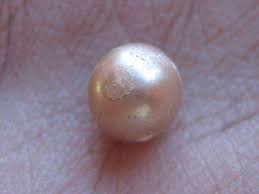
Perth: Archaeological excavations undertaken by the University of Wollongong (UOW) and the University of New England (UNE) on the north Kimberley coast of Western Australia have led to the discovery of a 2,000-year-old natural marine pearl, UOW said in a media release.
The Brremangurey Rockshelter in the Admiralty Gulf contains over 12,000 years of Indigenous history, including shell middens and extensive rock art. The site was excavated as part of a project led by UOW along with the University of New England and Wunambal-Gaambera Aboriginal Corporation.
The find has been announced in a paper appearing in Australian Archaeology. Lead author Associate Professor Kat Szabó from UOW’s Centre for Archaeological Science said a near-round pearl was found from within one of the shell middens in the Admiralty Gulf. Szabó described the find as “irreplaceable,” noting that “it was difficult to put a monetary value on such a heritage item.”
“Pearls have not been recovered before from ancient sites in Australia. Since the find is unique, analysis could not damage or take samples from any portion of the pearl, so researchers from UOW developed a range of non-destructive analyses to gather more information,” she said.
Round natural pearls are extremely rare in nature. The Brremangurey pearl’s shape, and the fact that it was found near the heartland of the Australian cultured pearl industry, initially raised doubts about its 2,000-year-old date. The date was established through radiocarbon analysis of surrounding shell midden material. To investigate whether it was a modern cultured pearl which may have worked its way into the deposits from the surface, micro-computed tomography (a form of micro CAT scan) was used.
The paper’s second author PhD student Brent Koppel said this allowed the team to see in detail all of the inner structures of the pearl.
“This analysis confirmed that it was a natural pearl that had grown inside a small pearl oyster for over a decade before the animal was harvested for eating,” Koppel said.
Although there are no records to suggest that pearls are of cultural significance to Indigenous peoples of the Kimberley, the pearl oyster shells, which produce them are very important. The shells formed the basis of a historically-recorded trade which stretched from the Kimberley to the Central Desert. It is likely that the pearl at Brremangurey is a by-product of pearl shell collection. The great numbers of pearl shells within certain layers of the shell midden at Brremangurey suggests that the shells’ cultural value extends well back into prehistory, according to UOW.
The Brremangurey Pearl and examples of Kimberley pearl shell valuables will be on display within the Lustre Exhibition at the Western Australian Maritime Museum. The exhibition opens on June 20.



